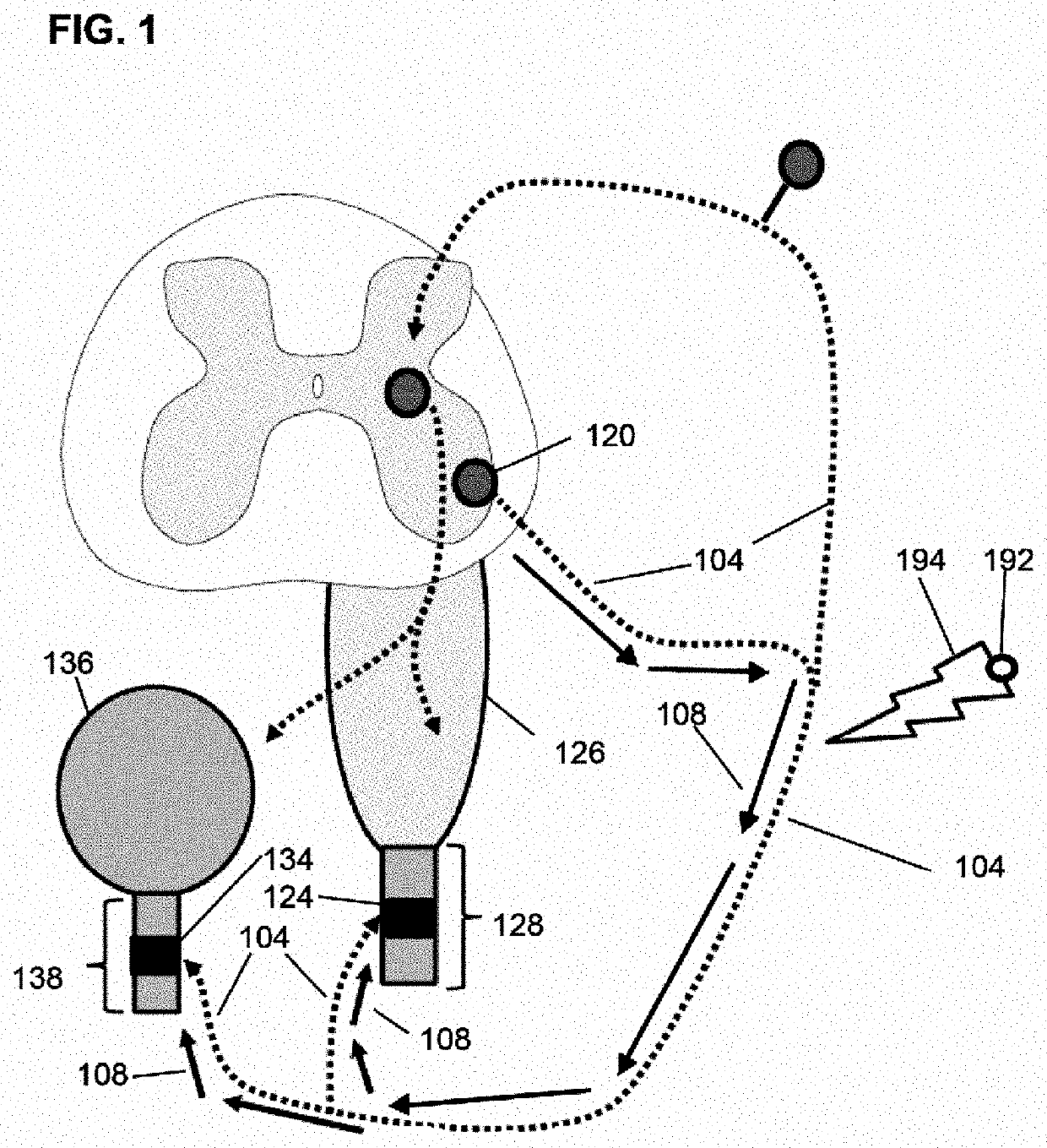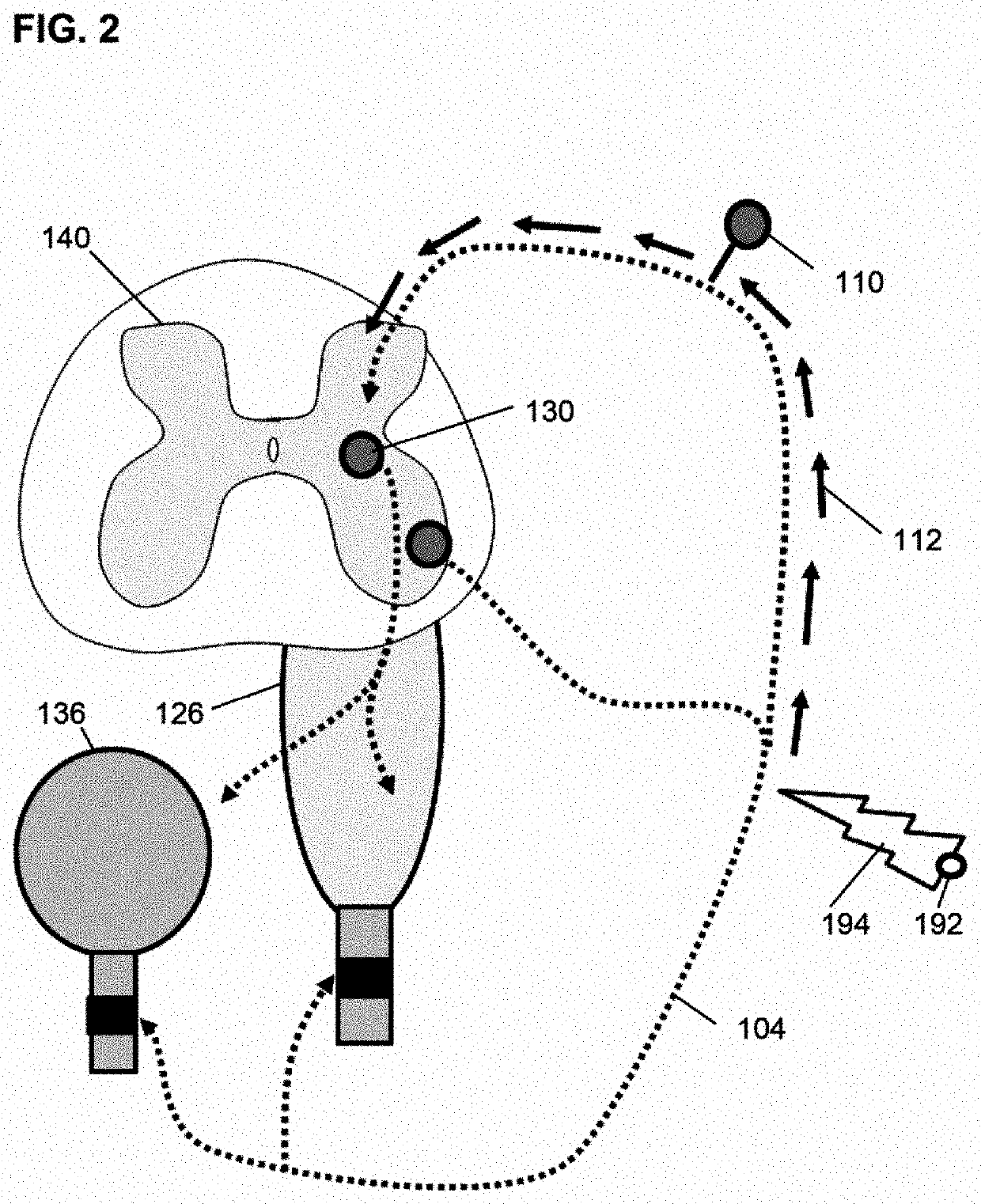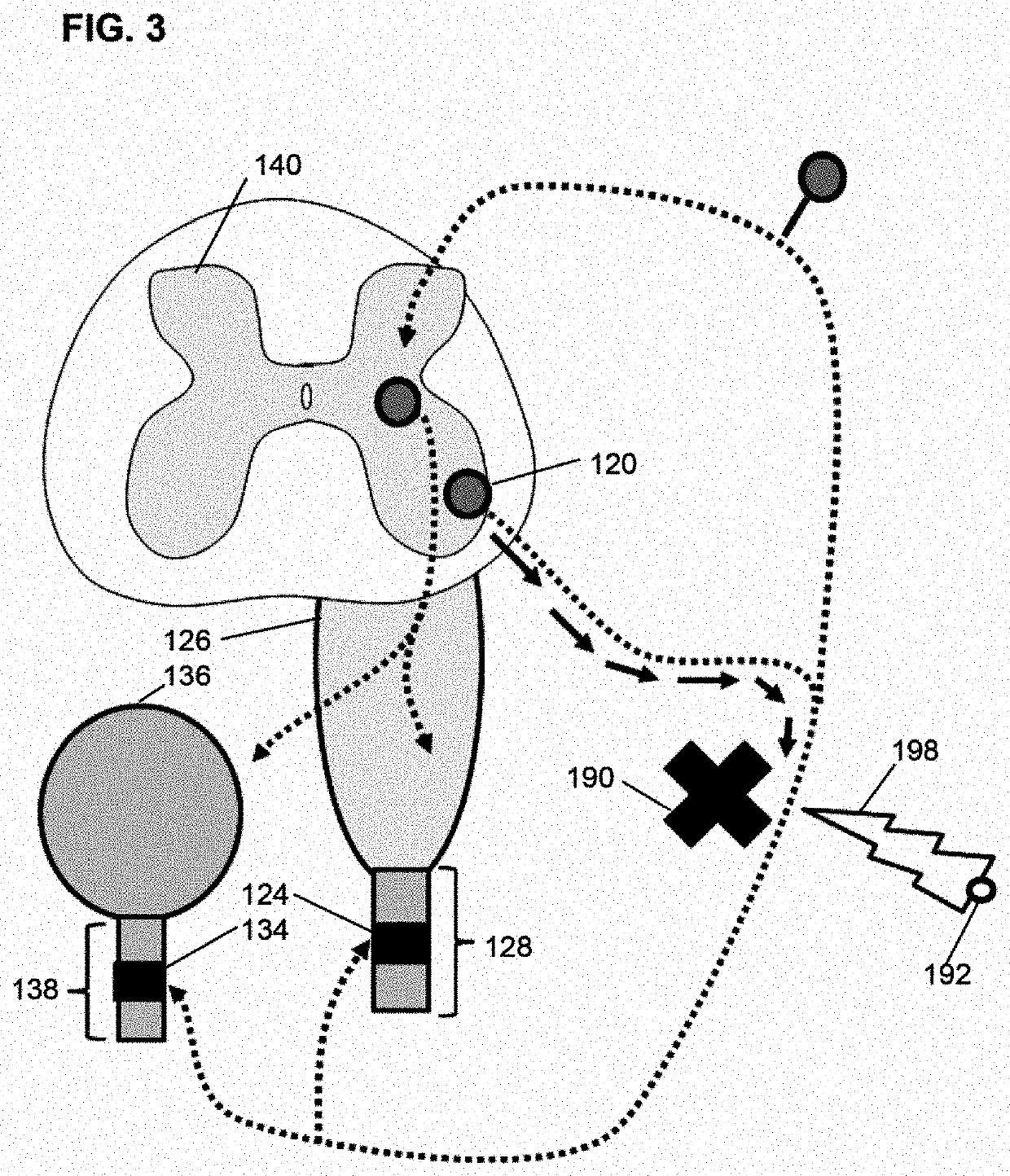Method of treating voiding dysfunction
a voiding reflex and a technology of feces, applied in the field of voiding dysfunction, can solve the problems of affecting the quality of life and participation in social and professional activities, residual urine in the bladder and feces remaining in the colon, and the dysfunctional voiding reflex cannot produce sufficient strength or duration of feces contractions, etc., to eliminate or reduce urinary and fecal incontinence episodes, eliminate or reduce
- Summary
- Abstract
- Description
- Claims
- Application Information
AI Technical Summary
Benefits of technology
Problems solved by technology
Method used
Image
Examples
example 1
in Anesthetized Animals
[0129]FIG. 7 through FIG. 16 provide the results from a series of studies. These studies provide the parameters for reliable, physiologically significant contraction of the external urethral and external anal sphincter for therapeutic purposes. Pudendal nerve stimulation pulse frequency, duration, or current are systematically varied while the other two are held constant, while monitoring urethral and anal pressure to construct stimulus response curves (i.e. frequency-, duration-, and current-response curves). Effects of pudendal nerve stimulation on clinically relevant urodynamic variables (e.g. urethral pressure, bladder leak point or voiding pressure, bladder capacity, and voiding efficiency (chronic spinal)) can also be recorded. Similarly, effects of pudendal stimulation on clinically relevant colorectal manometric variables (e.g. anorectal pressure, anal opening pressure) can be recorded.
[0130]A. Experimental Design and Methods.
[0131]Anaesthetized animal...
example 2
Evaluation
[0213]Example 2 sets forth the process to look at the long-term evaluation of clinical benefits of a device to prevent incontinence and allow drug-induced voiding in animals with spinal cord injury.
[0214]A. Methods for Incontinence Control.
[0215]Under sterile techniques, anesthetized animals undergo T10 transection and implantation of Synapse System Pulse Generator connected to tripolar pudendal electrodes (electrodes similar to Synapse System in principle but modified for size of animal). During implantation, the threshold current (I-T) for inducing a visible twitch of the perineum is measured, and the current is increased to a multiple of the threshold based on the results above. Before each test day, the threshold for inducing a twitch in the animal is measured, and if it changes, the working current is adjusted to a multiple of the new threshold. After post-op recovery, the animals are housed in a metabolism cage, which has a lining of “plastic air bubble” packing mate...
example 3
Studies
[0232]A. Implant of Pudendal Nerve Electrodes.
[0233]It has been shown that electrical stimulation of the pudendal nerve at low frequency (˜10 Hz) inhibits neurogenic bladder contractions (Peters, 2010 Neurourol Urodyn. September 29(7):1267-71; Martens et al., 2011 J Urol. September 186(3):798-804; Peters K M et al., 2005, Neurourol Urodyn. 24(7):643-7), which can lead to urine leakage. Using the methods of implantation of the tined electrodes described therein, implantation of a Programmable Pulse Generator can be successfully completed in about 30 minutes. Cuff electrodes have not been implanted on the pudendal nerve, but it is reasonable to assume that surgical implantation time will be longer than 30 minutes but still reasonable compared to various other surgical procedures.
[0234]B. Void / Continence Positions.
[0235]Brief (between 1 and 20 minutes, e.g. 5, 10 or 15 minutes), high frequency stimulation blocks PUD. This block is applied whenever the patient or caregiver wishes...
PUM
 Login to View More
Login to View More Abstract
Description
Claims
Application Information
 Login to View More
Login to View More - R&D
- Intellectual Property
- Life Sciences
- Materials
- Tech Scout
- Unparalleled Data Quality
- Higher Quality Content
- 60% Fewer Hallucinations
Browse by: Latest US Patents, China's latest patents, Technical Efficacy Thesaurus, Application Domain, Technology Topic, Popular Technical Reports.
© 2025 PatSnap. All rights reserved.Legal|Privacy policy|Modern Slavery Act Transparency Statement|Sitemap|About US| Contact US: help@patsnap.com



